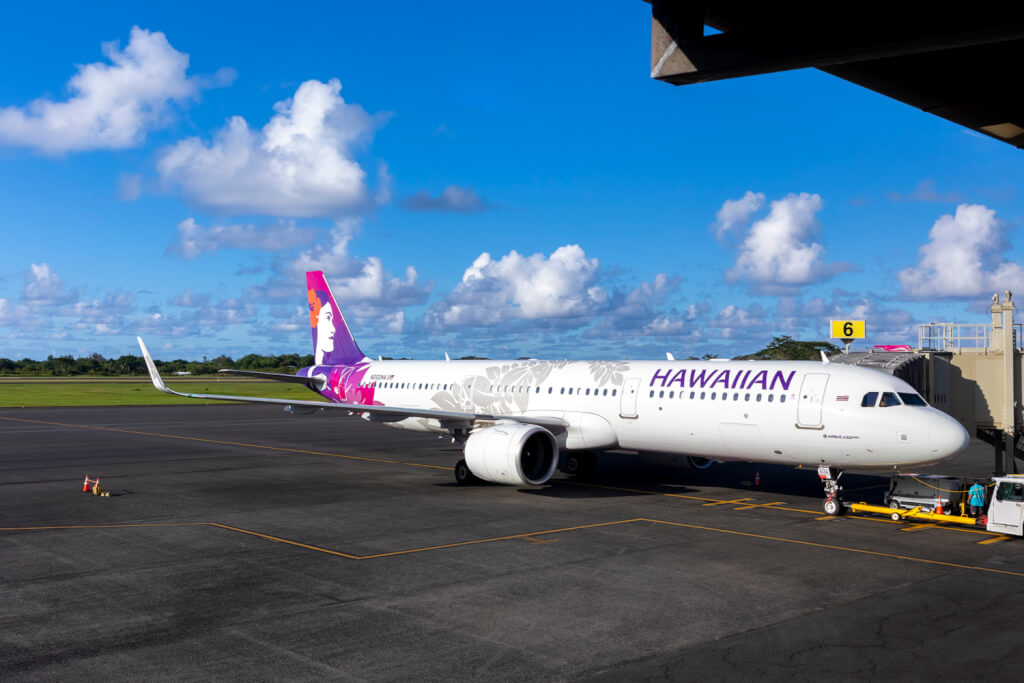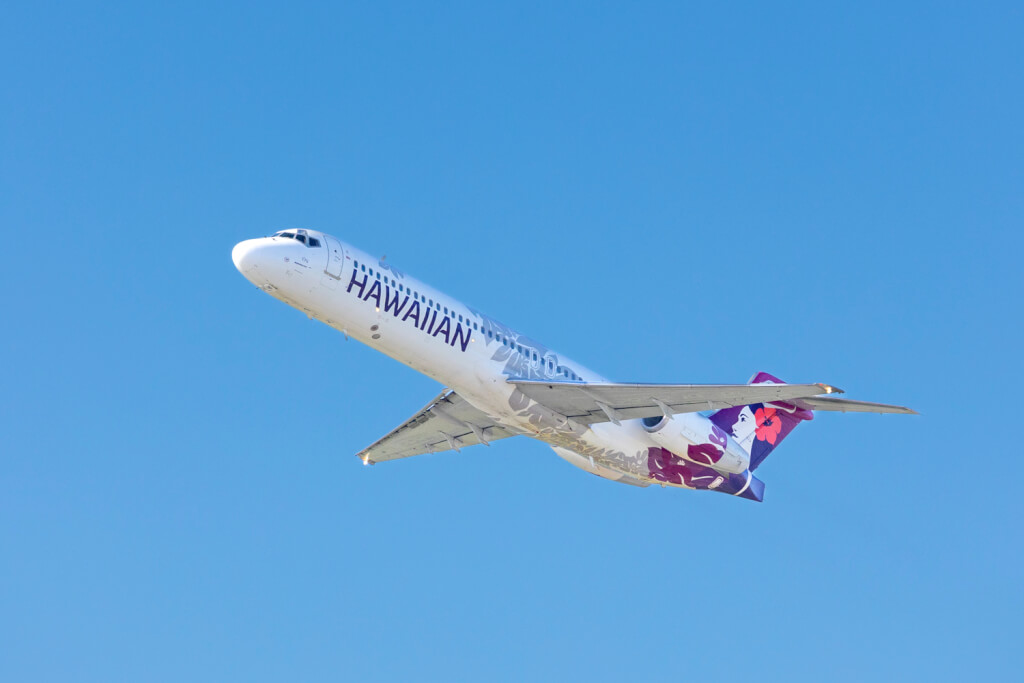Last updated on February 15th, 2024 at 10:38 am
Hawaiian’s inter-island fleet is becoming the bain of their existence. The venerable McDonnell Douglas-designed and Boeing-built aircraft are constantly breaking. But based on remarks by the Airline’s CEO earlier this month, it appears that the end for Hawaiian 717s may be near.
The Boeing 717 is an outstanding aircraft. Despite their diminutive size (for mainline aircraft), these birds are unparalleled – that’s why Delta keeps investing in its fleet. They’re comfortable – 2+3 seating is far better than 3+3 – super durable, and they’re incredibly efficient. But aircraft don’t last forever. For one, all pressurized aircraft are only rated to last a certain amount of cycles – how many times they get up to altitude and back down. Being that Hawaiian operates these birds on around 12 segments PER DAY, those cycles add up QUICK and are what ultimately led Hawaiian to scrap N481HA.
The other issue, of course, is just normal wear and tear. Hawaiian’s 717s operate in a hot, humid, salty environment. When you add these operating conditions to their punishing lifestyle and the fact that the oldest examples are now 25 years old, it’s easy to see why Hawaiian is having a hard time maintaining reliable operations with them. But, the end for Hawaiian 717s may be near.
The End for Hawaiian 717s May Be Near
Earlier this month, Hawaiian CEO Peter Ingram was at the IATA annual meeting in Istanbul, Turkey. While most of the coverage focused on his remarks about the Airline’s upcoming Boeing 787s, it’s the little blurb at the end that caught my attention. As you might imagine, that little blurb was regarding how the end of Hawaiian 717s may be near.
Specifically, Ingram stated their current plan is to continue operating their 717s at least through 2025 or 2026. Yes, that’s right. The current plan is to keep these aging birds flying for another two to three years. To the people tasked with keeping these aircraft flying, that probably seems like a long time. However, in terms of aircraft orders, that’s not a lot of time – especially when you consider the fact that Hawaiian has not ordered any aircraft yet.
Yup, Ingram states that not only have they not ordered any aircraft yet, but they also have not even selected one yet. But we now know what aircraft are under consideration. Those aircraft include the Airbus A220, the A319, the A320, and the Embraer E195.
The 717 Conundrum
As I’ve covered in the past, any discussion that the end for Hawaiian 717s may be near presents a significant challenge for the Airline. Why? Aside from the qualities I listed before, there is literally no other airline like the 717s on sale today. They are lightweight, weighing just 67,500 pounds empty, can carry 128 passengers in three classes, and their Rolls-Royce BR715s sip gas while taking a lot of abuse.
Engine durability is absolutely a must since inter-island ops mean that aircraft take off, get to cruising altitude, and almost immediately begins to descend. That’s not good for engine life, as, by design, engines cool down during cruise. Being that this doesn’t happen during intra-Hawaii flights, the turbine cores remain hotter than they typically would, which isn’t good for their longevity.
But what’s, perhaps, more important than engine durability as we contemplate the fact that the end for Hawaiian 717s may be near is weight. Lighter aircraft burn less fuel during take-off than heavier ones, which is important when they’re doing this roughly a dozen times per day. And that’s where things get really tricky. You see, most newer aircraft utilize geared turbofans (GTFs), which are quite a bit heavier than older technology engines. That results in similar-sized aircraft weighing more than the 717 – a lot more. Just look at these stats:
- A220: 77,600 lbs
- A319neo: 93,900 lbs
- A320neo: 97,700 lbs
- E195-E2: 78,705 lbs
See? All of these birds weigh at least 10,000 pounds more than the 717. Ouch. Mind you; the E2 carries the same number of passengers as does the A220-100. The A319neo can carry up to 140 passengers, while the A320neo can accommodate up to 165. And guess what? While GTFs are more efficient than older turbines, that efficiency is gained primarily during cruise. So, the extra weight of GTFs can’t really be offset by Hawaiian’s super-short stage lengths.
Commonality
Given the list Ingram has given us, the elephant in the room of discussions around how to handle the fact that the end for Hawaiian 717s may be near is commonality. The A319/A320neo would be the easiest aircraft to integrate into the fleet. Both share a type rating with Hawaiian’s existing A321neos and won’t require additional training for flight attendants, either. And they’re already using A321neos for intra-Hawaii ops to shore up their decrepit 717 fleet.

To really maximize commonality, though, Hawaiian would have to order A319/A320neos with Pratt & Whitney PW1100Gs. But we all know what a shitshow those engines have been and continue to be for Hawaiian. Yes, the A220 and E195-E2 use the PW1000-series of engines, but they’re not exactly the same and don’t have the same problems. Thus far, the PW1715G, PW1919G, and PW1500G all seem to be more reliable.
The End for Hawaiian 717s May Be Near, Final Thoughts
This post is getting super long, so I think I’m going to end it here. I could go on and on about why I still think the Embraer E-195 remains the best choice, but I’ll save that for another post. The important thing to know here is that the end for Hawaiian 717s may be near and that we finally know what planes are under consideration for their replacement.
What I find interesting, though, is that the Boeing 737 isn’t under consideration. Yes, the A319/320neo makes the most sense from a commonality standpoint, but Hawaiian is also considering the A220 and E195, so why not consider the 737, especially since their last aircraft order was for the 787?

